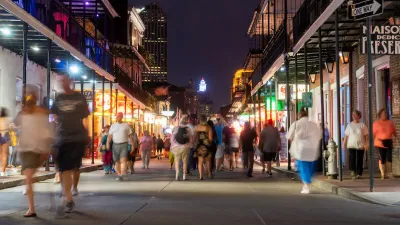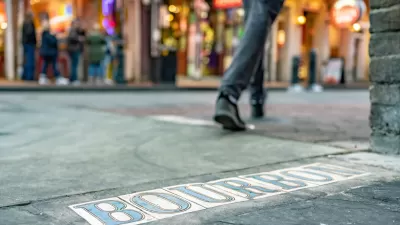Urban design efforts in New Orleans run 'headlong into the politics of race, class, and power'. Will the new New Orleans be a smaller, wealthier, and less diverse place?
"...But the dreamy PowerPoint presentation by the Urban Planning Committee of Mayor Ray Nagin's Bring New Orleans Back Commission ended in a cold splash of harsh reality. Despite Nagin's plea that the meeting be held in a "spirit of peace," police eventually had to handle the line of furious residents gathered at the microphone. Amid cries that the plan was too academic or did too little to help people trying to return, Harvey Bender, a 44-year-old resident of the Lower Ninth Ward, pointed a finger at committee Chairman Joe Canizaro, a prominent local developer. "I hate you, Mr. Canizaro, because you've been in the background scheming to get our land,"he said. "I'm going to die on my land."
In the City That Care Forgot, the plan for a grander future has run headlong into the politics of race, class, and power, which, as in most places, translates to money. Resistance to the commission's plan, even outright defiance, still exists, but that may be the least of its problems. There's been good news, to be sure, some of it just last week. But the Bring New Orleans Back blueprint faces a host of daunting questions--questions about flood protection, about controlling scattershot redevelopment, and about Washington's willingness to foot the bill to bring back the Big Easy. For now, all that seems certain is that the New Orleans of tomorrow will be smaller in size and population, most likely a whiter, wealthier city, and perhaps more of a tourist theme park than the rich cultural gumbo that made the Big Easy a unique American experience."
FULL STORY: Turf Wars in the Delta

Planetizen Federal Action Tracker
A weekly monitor of how Trump’s orders and actions are impacting planners and planning in America.

Maui's Vacation Rental Debate Turns Ugly
Verbal attacks, misinformation campaigns and fistfights plague a high-stakes debate to convert thousands of vacation rentals into long-term housing.

Restaurant Patios Were a Pandemic Win — Why Were They so Hard to Keep?
Social distancing requirements and changes in travel patterns prompted cities to pilot new uses for street and sidewalk space. Then it got complicated.

In California Battle of Housing vs. Environment, Housing Just Won
A new state law significantly limits the power of CEQA, an environmental review law that served as a powerful tool for blocking new development.

Boulder Eliminates Parking Minimums Citywide
Officials estimate the cost of building a single underground parking space at up to $100,000.

Orange County, Florida Adopts Largest US “Sprawl Repair” Code
The ‘Orange Code’ seeks to rectify decades of sprawl-inducing, car-oriented development.
Urban Design for Planners 1: Software Tools
This six-course series explores essential urban design concepts using open source software and equips planners with the tools they need to participate fully in the urban design process.
Planning for Universal Design
Learn the tools for implementing Universal Design in planning regulations.
Heyer Gruel & Associates PA
JM Goldson LLC
Custer County Colorado
City of Camden Redevelopment Agency
City of Astoria
Transportation Research & Education Center (TREC) at Portland State University
Jefferson Parish Government
Camden Redevelopment Agency
City of Claremont





























